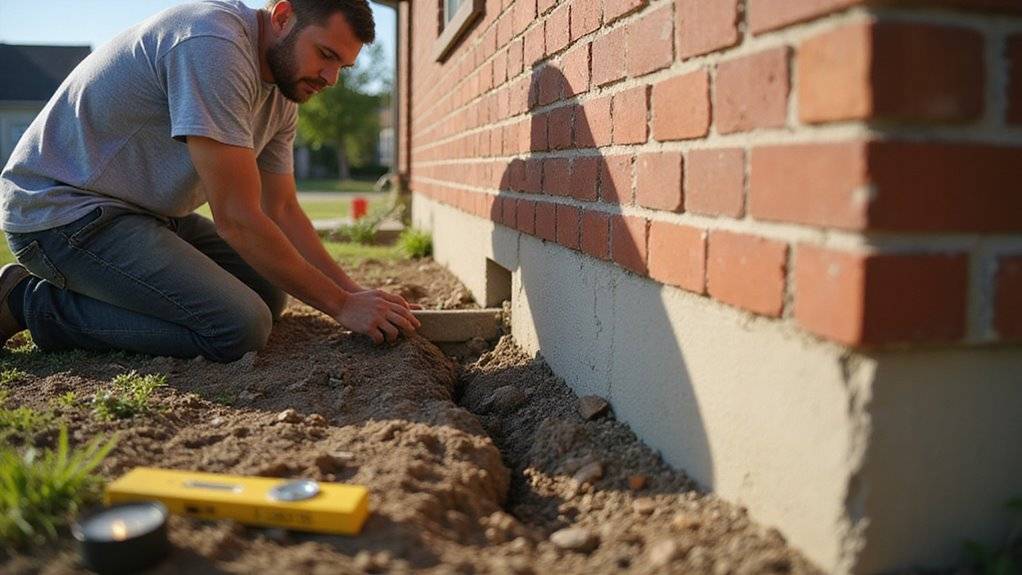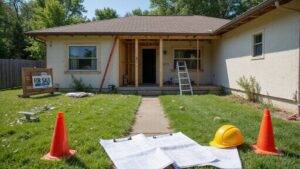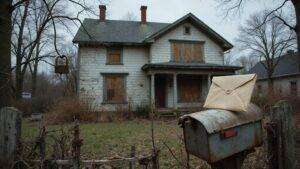Selling your home is stressful when you want everything to go smoothly. Foundation issues can threaten your sale and lower your home’s value. Many sellers overlook these problems until the last minute.
Buyers get scared by cracks in walls, sloping floors, or doors that stick. These warning signs often lead to tough negotiations or lost deals. If you ignore foundation problems, you might spend more money and time fixing them later.
You can avoid surprise setbacks by learning how to spot foundation issues before listing your home. Early detection helps you address concerns and gives buyers more confidence.
This approach makes the selling process much easier. This blog will guide you through the steps to find and handle foundation problems before you sell.
Key Takeaways
- Inspect exterior and interior walls for cracks, especially horizontal or stair-step patterns, and gaps at corners.
- Check floors for unevenness, sloping, or gaps between baseboards and floors using a level or marble.
- Test doors and windows for sticking, difficulty operating, or visible misalignment in frames.
- Look for moisture, water stains, musty odors, or mold in basements, crawlspaces, and near the foundation.
- Examine yard drainage, ensuring downspouts extend away from the house and no water pools near the foundation.
Understanding the Importance of a Solid Foundation
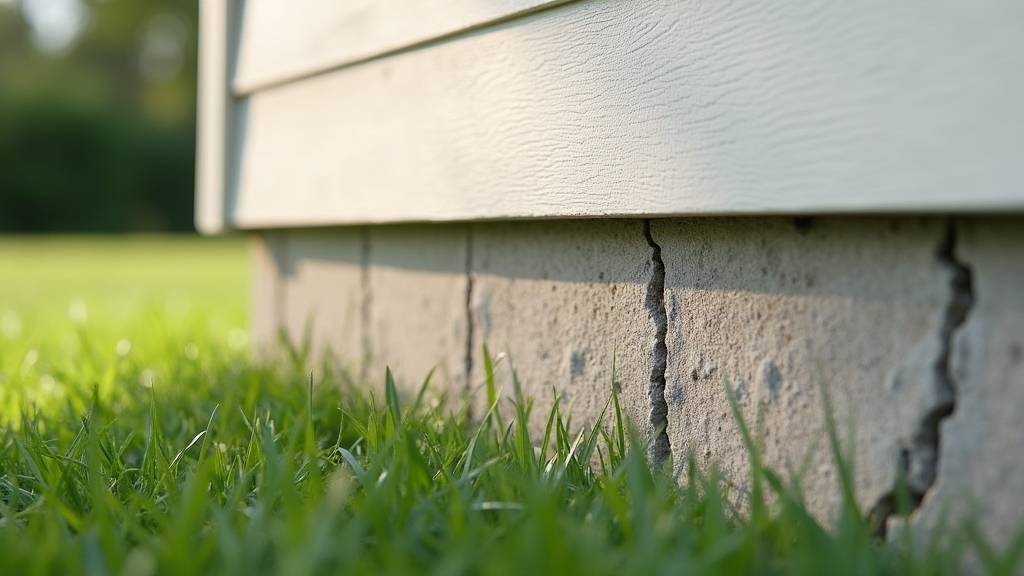
A solid foundation is important because it supports your entire house. Without a strong foundation, your home can become unsafe. Structural problems often start at the base.
A strong foundation keeps your house safe—most structural issues begin at the base, making it essential for your home’s stability.
If the foundation shifts, walls and floors may crack or move. These issues can lead to expensive repairs. Small problems in the foundation can become worse over time.
Regular inspections help you spot issues early. If you notice uneven floors or doors that stick, you should act quickly. Early action can protect your home’s value.
Understanding foundation care helps you avoid costly surprises. You can prevent further damage by addressing issues promptly and maintaining proper drainage around your home. Your home’s safety depends on a stable foundation. Identifying foundation issues early can save you from major repairs later.
Common Causes of Foundation Problems
You’ll often find that foundation problems start with soil movement, poor water drainage, or tree root intrusion. Each of these factors puts unique stress on your home’s structure and can lead to costly damage if ignored. By recognizing these common causes early, you can take targeted steps to protect your foundation.
Additionally, improper construction or settling of the foundation can also contribute to issues, emphasizing the importance of proper foundation assessment from professionals. Recognizing early signs of damage can help prevent extensive repairs and further structural problems, making timely inspection and diagnosis essential.
Soil Movement and Shifting
Soil movement and shifting are main causes of foundation problems. Clay soils swell when wet and shrink when dry. This cycle can damage your foundation.
Cracks, uneven floors, and stuck doors may appear if soil shifts under your home. If you notice these signs, check your soil conditions. Early detection helps prevent major repairs.
If you plan to sell, inspect for soil movement first. When building or fixing, use proper soil compaction methods. Well-compacted soil makes the foundation more stable.
Fixing soil issues early helps protect your property’s value. Taking action now can save money and prevent bigger problems later.
Water Drainage Issues
Water drainage issues around your home can damage the foundation. Poor drainage lets water collect near the base of your house. This water can seep into the soil and cause problems.
If water soaks the soil, it can make the ground shift. Shifting soil puts uneven pressure on your foundation. This can cause cracks or make the house settle.
A high water table from drainage problems can make things worse. Water under the house adds pressure to basement walls. If too much pressure builds, water may leak inside and weaken the structure.
Gutters and downspouts should direct water away from your home. Proper grading helps keep water from pooling near the foundation. If you keep water away, you help protect your house from damage.
Tree Root Intrusion
Tree roots can damage your home’s foundation. Roots look for water and may grow under or beside the foundation. As they grow, they push the soil and cause uneven settling.
Cracks in walls, floors, or the foundation can be signs of root intrusion. Trees planted close to your house are more likely to cause these issues. You should pay special attention to large trees with wide roots.
If you see roots near your home or notice soil movement, check the area carefully. An arborist or foundation expert can help if you think roots are causing problems. Early action may prevent expensive repairs and protect your home’s value.
Examining Exterior Walls for Cracks
When you inspect your home’s exterior, pay close attention to horizontal cracks, as they often indicate significant foundation movement. Watch for stair-step cracks in brickwork and check if there are separations at the corners of the building. These patterns can point to underlying structural issues that need prompt evaluation.
Additionally, inspecting for foundation issues such as cracks and separations can help you determine whether professional assessment is necessary before selling. Recognizing early signs of structural damage can save you from costly repairs and facilitate a smoother selling process.
Spotting Horizontal Wall Cracks
Horizontal cracks in exterior walls are a serious warning sign. These cracks often mean the foundation is moving or under pressure. They need prompt attention.
You should check the length, width, and location of each crack. If a horizontal crack is longer than a few feet or wider than 1/4 inch, it may signal structural problems. Larger cracks are more dangerous.
Filling these cracks is not enough. A foundation specialist should inspect the damage if you see these signs. Early repairs can stop further harm and lower future costs.
Fixing horizontal cracks before selling your home protects its value. This also gives peace of mind to buyers. If you ignore these cracks, you risk bigger repairs later.
Monitoring Stair-Step Cracks
Stair-step cracks in brick or block walls are signs of foundation movement. These cracks create a zigzag pattern along mortar joints. If you see them, your foundation may be shifting.
Check all sides of your home for these cracks. Pay extra attention near windows and doors, as cracks often form there. If you find any, note their length, width, and exact location.
Take clear photos and mark the date for each crack you find. You should monitor these cracks regularly for any changes. If a crack gets longer or wider, this may mean ongoing movement.
Cracks wider than 1/8 inch could signal a serious problem. You should consult a foundation expert if cracks grow or spread. Early action helps prevent more damage to your home.
Checking Corner Separations
Corner separations are cracks that often appear where two exterior walls meet. These cracks can signal problems with your home’s foundation. If you see them, your foundation may be shifting or settling unevenly.
Walk around your home and look closely at each corner. Use a ruler to measure any cracks or gaps you find. If gaps are wider than a quarter-inch or get bigger, you should be concerned.
If you notice movement in the cracks, act quickly. Fixing these issues early can prevent more serious damage. Taking care of corner separations shows buyers you have maintained your home well.
Checking for Gaps Around Windows and Doors
You can spot early signs of foundation trouble by checking gaps around windows and doors. Gaps often appear or widen if the foundation shifts. These changes may signal deeper structural problems. Additionally, uneven or sloped floors inside the home can be indicators of foundation issues, prompting further investigation. Look for windows or doors that do not open or close easily. If you see light coming in through the edges, there might be a gap.
Newly formed cracks or spaces between the frame and wall are warning signs. Inspect all frames for uneven spacing or new openings. Paint or caulking that is pulling away from the frame suggests movement. If any of these issues appear, consider a closer inspection of your foundation. Regularly monitoring home structural integrity can help catch issues early before they become costly repairs.
Noticing Uneven or Sloping Floors
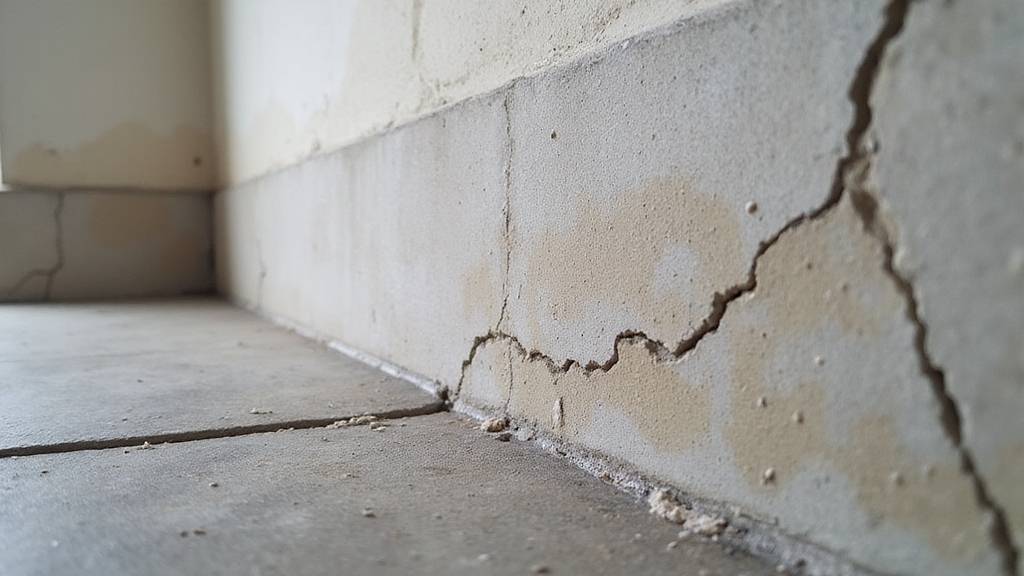
You’ll want to watch for uneven or sloping floors, as these often signal foundation movement or settling. Look for furniture that rocks, gaps under baseboards, or doors that swing open on their own. Use a level or marble to check floor levelness and confirm suspicions before seeking professional assessment.
Keep in mind that foundation issues can sometimes be hidden behind interior finishes, so a professional inspection may be necessary for an accurate diagnosis. Additionally, understanding local market expertise can help you evaluate the severity and potential costs of repairs.
Common Causes of Sloping
Sloping floors are often caused by problems with a home’s foundation. If you notice uneven floors, your foundation may be shifting or settling. Addressing these issues early can prevent further damage.
Common reasons for sloping floors include soil movement, water damage, and poor construction. Expansive soils, like those with clay, can swell or shrink with moisture. This movement can push or pull on your home’s foundation.
Water that leaks or drains poorly can wash away soil beneath the house. This erosion weakens support and causes floors to slope. Foundation cracks may also appear if the problem continues.
Homes built with weak materials or shallow footings are more likely to have foundation trouble. If builders cut corners, the structure may not stay level over time. Identifying the cause helps you choose the right repair.
Visual Clues to Spot
Sloping floors can show early signs of foundation problems. Gaps between the floor and baseboards or walls often mean the foundation is shifting. These clues help you spot issues before they become severe.
Doors or windows that do not close properly may also point to uneven floors. Misaligned frames are another warning sign to watch for. Cracks in floor tiles or hardwood, without a clear reason, should raise concern.
Furniture that rocks or sits unevenly can signal a problem under the floor. If you notice these changes, consider having your foundation checked. Early action can help you avoid bigger and costlier repairs later.
Measuring Floor Levelness
To check if your floors are level, use simple tools like a carpenter’s level or a laser level. Place the level on the floor and see if it shows uneven spots. These tools help you spot any dips or slopes easily.
A rolling ball or marble can also show if the floor tilts. If the ball moves on its own, the floor is likely sloped. Always check more than one room for a full picture.
Record any slope greater than one inch over twenty feet. This is more than most building standards allow. If you find large uneven spots, contact a professional for advice before selling.
Inspecting Interior Walls and Ceilings for Damage
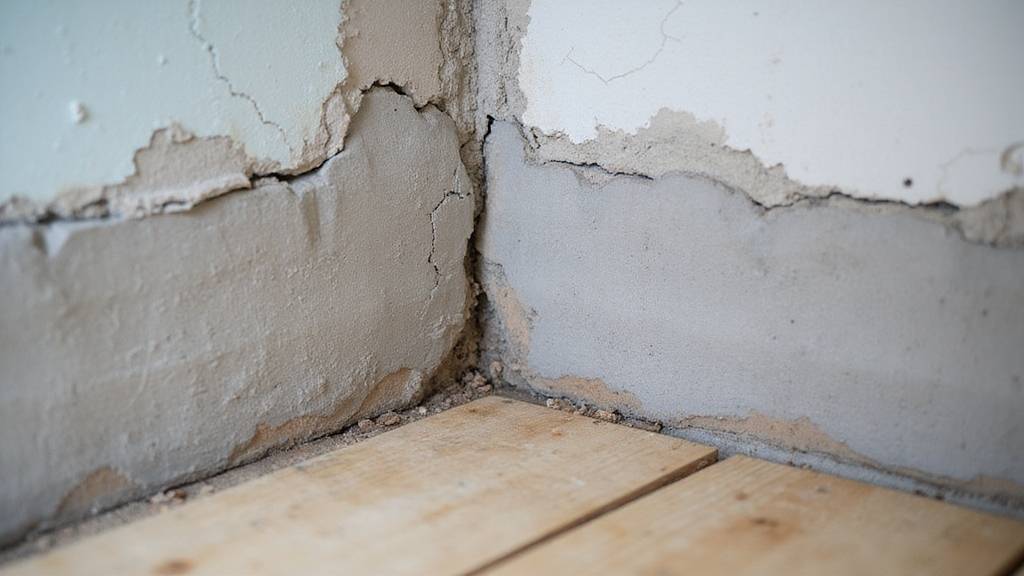
You should inspect interior walls and ceilings for signs of damage. Foundation problems often show up inside your home first. Cracks, especially above doors and windows, can be early warning signs. Foundation movement can cause these cracks to appear and worsen over time. Paint that bubbles or wallpaper that peels might mean moisture is getting in. If you see these, foundation movement could be the cause. W
all and ceiling joints with gaps may signal uneven settling. Use a flashlight to spot any bulges or sagging areas. These could hide more serious damage. If you find any of these problems, consider getting a trusted inspection before selling your home. Proper inspection can help identify issues early, saving you money and stress when selling.
Testing Doors and Windows for Proper Operation
Testing doors and windows helps you find possible foundation problems. Problems with opening or closing may mean the foundation has shifted. If you notice these issues, further inspection is needed. Selling your house fast can sometimes involve identifying and addressing foundation concerns early to ensure a smooth sale. Check each door and window by opening and closing them.
Look for resistance, gaps, or misalignment if they do not move smoothly. If a window or door sticks, note where and how often it happens. Inspect the locks and latches to see if they work properly. Frames and sills should not have cracks or peeling paint. If you find these problems, record them for future reference. Being aware of foundation issues early can help you avoid costly repairs and delays when selling your house.
Looking for Signs of Moisture or Water Damage
You should inspect basements and crawlspaces for any moisture accumulation or standing water, as these areas are especially vulnerable. Check interior and exterior walls for staining or discoloration, which often signals water intrusion. Don’t ignore musty odors, since persistent damp smells frequently indicate hidden water damage affecting your foundation.
Inspect Basement and Crawlspaces
Inspecting basements and crawlspaces is important for spotting early signs of foundation problems. These areas often show moisture or water damage first. Any issues here can quickly affect the whole foundation.
If you notice musty smells or see dampness, there may be hidden water problems. Warped wood or visible mold usually means moisture has been present for some time. Homeowners should consider soil testing if moisture is found.
Standing water or damp spots can point to drainage issues or leaks. Support beams and joists need checking for wood rot or mold. White, powdery stains—called efflorescence—show water is moving through the concrete.
Improving yard grading or adding sump pumps can help stop water from getting in. Quick action protects your home’s foundation from serious damage. If problems are found, contact a professional for advice.
Check Walls for Staining
You can spot foundation problems by checking walls for stains. Wall stains and peeling paint often mean moisture is entering your home. Moisture problems are sometimes caused by foundation issues.
Look for yellow, brown, or gray stains at the base of walls or near windows and doors. Paint that is peeling, bubbling, or flaking may signal water damage. If you see these signs, the foundation could be letting water in.
Use a flashlight to check behind furniture and in corners for hidden stains. You should write down any unusual marks you find. If stains or peeling come back, you may have a repeating moisture problem.
Early detection helps you fix foundation issues before they get worse. Quick action can protect your home’s value and prevent expensive repairs.
Evaluate Musty Odors
Musty odors in your home often mean there is hidden moisture or water damage. These smells can be a sign of foundation problems. If you notice a musty smell, check for moisture right away.
Basements, crawl spaces, and lower walls are common places for musty odors. You should look for signs of dampness in these areas. If you find a musty smell near baseboards or floors, moisture may be present.
Visible mold, water stains, or damp spots can confirm a moisture problem. A moisture meter can help check for hidden leaks. If you find high moisture, address the source quickly to prevent further damage.
Assessing Crawl Spaces and Basements
Crawl spaces and basements often show the first signs of foundation problems. Cracks, moisture, or uneven floors are common warning signs. Inspecting these areas helps you find possible issues early. Addressing problems promptly can prevent costly repairs and improve the overall value of your home.
Crawl spaces and basements reveal early foundation issues—watch for cracks, moisture, or uneven floors to catch problems before they worsen.
Look at walls and floors for horizontal or stair-step cracks. These cracks may mean the foundation is moving or settling. If you see them, further checks are needed.
Check for water stains, dampness, or pools of water. Moisture can damage the foundation and attract pests. If these problems exist, they should be fixed quickly.
Ventilation is important in these spaces. Poor airflow raises humidity and can make problems worse. If air feels stale, consider improving ventilation.
Proper insulation keeps the area dry and controls temperature. Insulate crawl spaces and basements to help prevent condensation. If insulation is missing or damaged, upgrades may be needed.
Use a level to check if floors are uneven. Probe wood framing for any softness or rot. Record all problems so you can fix them before selling your home. Recognizing these early signs of foundation issues can save you time and money during the selling process.
Identifying Foundation Settling and Shifting
You can tell if your home’s foundation is settling or shifting by looking for specific warning signs. Foundation settling is normal, but too much movement can harm your home’s value. If you catch these issues early, you can fix them before selling your home.
Cracks wider than 1/4 inch in walls, floors, or near windows and doors often signal a problem. Sloping or uneven floors may mean your foundation is settling unevenly. Gaps between walls and ceilings or floors show that the structure is moving.
If you see these signs, call a professional for advice. Early action lets you explore repair and soil stabilization options. Proper repairs can help keep your home’s value and safety.
Recognizing Bowed or Leaning Walls
Bowed or leaning walls are clear signs of possible foundation problems. These walls may curve, bulge, or tilt inward. If you see this, your home could have serious structural issues.
Check basement and exterior walls closely. Hidden cracks may be under paint, wallpaper, or paneling. Decorative finishes can sometimes cover these defects.
Use a long level or straightedge against the wall to find any bends. If the wall moves more than one inch, call a foundation expert right away. Early repairs protect your home and prevent surprises for future buyers.
Monitoring Chimney Separation or Tilting
Chimney separation or tilting can signal problems with your home’s foundation. If you see the chimney leaning or pulling away, this often means the foundation is moving. Early detection can help prevent costly repairs later.
Check the spot where the chimney meets your house for cracks or gaps. Use a level or plumb line to see if the chimney is tilting. If the gap gets wider over time, the foundation may be shifting.
Write down any changes you see during each inspection. If you notice new cracks or more tilting, contact a professional. Acting quickly can keep the problem from getting worse.
Evaluating Landscaping and Drainage Impact
Landscaping and drainage can affect your foundation. Poor drainage or irrigation may damage your home’s foundation over time. If you see water pooling near your house, drainage could be a problem.
Check your lawn for uneven growth or soggy spots. These signs often mean water is not moving away from your foundation. If the soil stays wet, your foundation may shift or crack.
Downspouts should extend at least five feet from your house. The soil must slope away from the foundation. If trees or shrubs are too close, their roots can disturb the soil and foundation.
Proper landscaping maintenance helps avoid moisture problems. If you plan to sell your home, address these issues early. Preventing foundation problems can protect your home’s value.
Knowing When to Call a Professional Inspector
You should call a professional inspector if you see warning signs of foundation problems. Cracks in walls, uneven floors, or sticking doors often mean serious issues. An inspector can find the cause and suggest the best solution.
Crumbling concrete or shifting footings are signs to get help right away. Water leaks or dampness near your foundation also need expert attention. If you plan to sell your home, an inspection can reveal hidden problems.
Early action can save you money and protect your property. Never try to fix foundation problems by yourself. Professional advice ensures lasting and safe repairs.
Conclusion
If you notice foundation issues early, you can avoid bigger problems when selling your home. Simple signs like cracks or sticking doors should not be ignored. If you act quickly, you can address these problems before listing your property.
If you want to sell your house without the hassle of repairs, we buy houses for cash. Sellers often prefer this option for a faster and easier process. You can save time and avoid dealing with costly foundation repairs.
If you are ready to sell or have questions, we at Freedom Path Investors are here to help. Reach out to us today for a no-obligation cash offer. Let us make your selling experience simple and stress-free.

